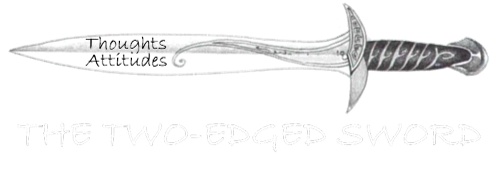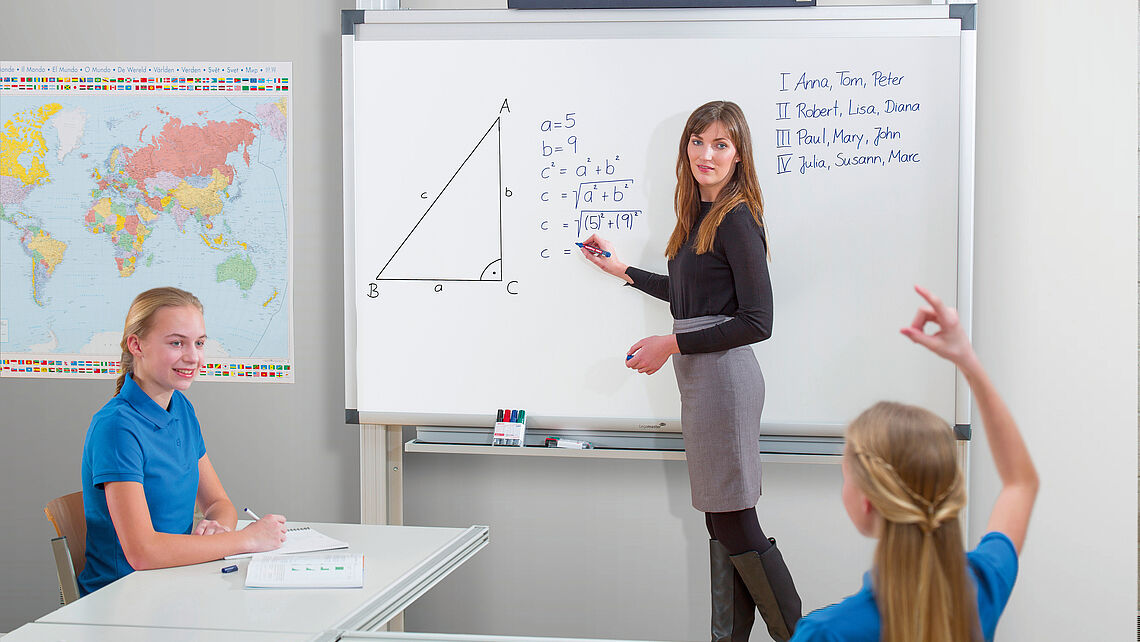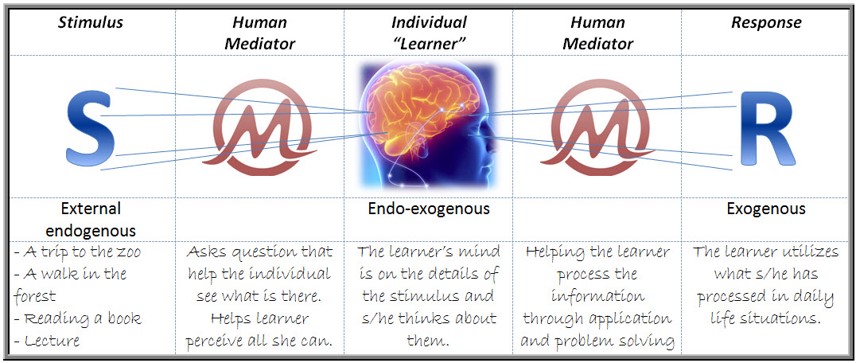Equipping Educators
Teaching, in its simplest sense, is the communication of knowledge. This knowledge may be a fact of science or math, a Truth, doctrine of religion, a precept of morals, a story of life, or the processes of an art. It may be taught by the use of words, by signs, by objects, by actions, or examples . . . the training of the mind, the increase of intelligence, the implantation of principles, or the formation of character. . . it is the painting in another’s mind, the mental thought and understanding to the comprehension of some Truth which the teacher knows and wishes to communicate.
Unless the teacher accepts the role of a mediator, the “experience” is often meaningless or misconceptions become truth. Some features of mediated learning are that the learner:
- becomes better able to process stimuli from the environment;
- acquires tools for learning becoming an autonomous learner;
- recognizes the value of mediation as a way to interact; and
- acquires the ability to transmit values and beliefs. “Mediation not only transmits but it transforms.”
There are three considerations to effectively implement cognitive mediation:
- Intentionality: The mediator goal is to interact with a learner so the learner changes his thought processes in order can solve problems, transmit information, or teach a skill. Such transmission, according requires work on the teacher’s part – mediation. It also requires a relationship with the learner –a love for him. The mediator must know his subject well.
- Understanding (Meaning): Mediating questions like “Why?” “And what for?” motivates learner to want to know more.
- Transformation (Transcendence): Not only the learners’ thoughts and actions are changed, but his heart is molded into what God intended it to be.
All three of these factors are not just important for Christian education. Transmitting knowledge by implementing human cognitive mediation could help restore, transmit, and maintain a biblical worldview thus transforming the mind of the student and promoting biblical thinking.
Content/Curriculum. The truths (knowledge) and skills that are taught.
Stimulus. The stimulus is the teaching strategy used so the student can learn the content. It is not discovery learning with no teacher intervention that helps the child understand; it is, however, guided discovery.
Human Mediator-1. Without the mediator, the “experience” is often meaningless or misconceptions become truth. Dr. Carol Brown is Founder of Equipping Minds, a cognitive program that teaches basic process skills to individuals with special needs. She instructs parents and teachers how to use Aristotle’s “Ten Categories of Being” to help students’ attend to the story being read or the picture she shows them. Such mediation by a teacher is necessary for any learner to know what is important. A human mediator who is negotiating between the activity and the student should know how to ask concrete questions so the student observes what is intended.
Learner. Even without the mediator, the student can and should gain new knowledge. The issue goes back to whether he constructed truth. Truth does not come automatically but requires direction. If it is invented, is it true? Relativism and subjective Truth are causing disunity and chaos in our once ordered society.
Human Mediator-2. The mediator also initiates the ability to transfer information to new situations or use it to solve real world or make personal day-to-day decisions. Getting students from 2 to 102 years old to think about and discuss what they were taught requires work on the teacher’s part. Being used as a mediator and the Holy Spirit, the condition of the heart is, however, the goal.
Responses. Responses are observable evidence of learned knowledge put into practice thus transitioning knowledge into a skill; accessing the knowledge becomes so automatic that it becomes a skill. For example, when learning to drive a car, there is a lot of knowledge that must be attained. Even though we may not understand it, we know that where the brake pedal is and what it does. Some may argue that this has nothing to do with biblical knowledge, but the scientific principle works because of laws of nature that God put into place when He created the universe in order for man to take care of it. Once such information is put into memory, processed, and practiced, the knowledge automatically and applied, thus becoming a skill. Training the mind to respond takes practice but is based on knowledge about the components of that skill.
Reference: Feuerstein, Shmuel. Biblical and Talmudic Antecedents of Mediated Learning Experience Theory: Educational and Didactic Implications for Inter-Generational Cultural Transmission. Ashkelon, Israel: Ashkelon Academic College, 2002.


